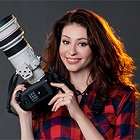11 Best Canon Lenses in 2025
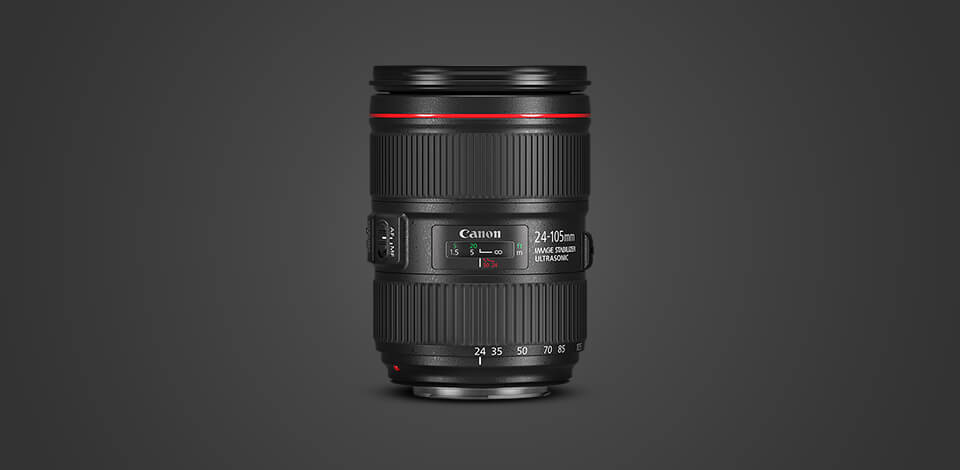
Determining the best Canon lenses is no easy task. Canon brand is quite popular in the world, which is why loads of manufacturers produce hundreds of great compatible lenses that cover all price ranges, from cheap models available for double digits to state-of-the-art pieces that cost thousands of dollars.
Lucky for you, I’ve put together the list of the best Canon lenses and will help you find the perfect model for your needs and budget.
Top 11 Best Canon Lenses in 2025
Most photographers need EF-S and EF models that are compatible with SLR cameras that have an APS-C sensor type. That includes the budget-friendly Rebel models and midrange units such as EOS-90D.
1. Canon EF 50mm f/1.8 STM
FixThePhoto editors’ choice
Focal Length: 50mm | Lens Type: prime | Common Subjects: portraits, action | Minimum focus distance: 1.15 ft | Magnification: 0.21x
$![]() VIEW ON AMAZON
VIEW ON AMAZON


⊕ Affordable model
⊕ Allows achieving shallow depth of field effects
⊕ Quality bokeh
⊕ Compact build
⊖ Not found
Canon 50mm f/1.8 STM offers terrific optical performance and is very easy to use. It’s supplied with top-notch optics that are identical to the ones found in EF 50 mm f/1.9 II, which in turn was similar to the original EF 50 mm f/1.8 but was protected with multi-coating. The lens’ AF system is fast and produces minimum noise.
Lenses of this type offer the best performance when used on full-frame, which is how I tested it. Feel free to make inferences for models packed with smaller sensors.
One more thing I’d like to note is the inability to trigger manual override regardless of which camera or lens you’re using if you’re in SERVO AF mode. It will continue to switch to AF automatically. Pick MF on your lens or “Single-shot” on the camera to enable manual focusing. If you are interested in buying a good lens for the Canon Rebel T6i, there is a similar model called the Canon 50mm f/1.8, which is considered one of the best lenses for the Canon Rebel T6i because of its terrific optical performance and ease of use.
2. Canon EF 85mm f/1.8 USM
Good for portraits
Focal Length: 85mm | Lens Type: telephoto | Common Subjects: portraits | Minimum focus distance: 2.8 ft | Magnification: 0.27x
$![]() VIEW ON AMAZON
VIEW ON AMAZON


⊕ Lightweight
⊕ Satisfying price
⊕ Good sharpness with minimum stopping down
⊕ Large aperture
⊖ No lens hood in a kit
The combination of a small telephoto focal length and a big max aperture with quick AF makes this model one of the best camera lenses for portrait photographers.
85 mm is a terrific focal length for portraiture and if your main passion is taking photos of people, then this Canon EF lens definitely deserves your attention. Moreover, it’s also a great choice for photographers, who need a compact lens for traveling or are on a tight budget.
The min and max lengths of the lens remain unchanged, and when taking full-body photos of an adult on a crop sensor, it’s quite easy to find a point when everything is in focus (right after the 15 feet mark), meaning there’s no upside to having a larger aperture that can create a pleasant blurry background.
- Check out the best lenses for portraits.
3. Canon EF-S 24mm f/2.8 STM
Full-time manual focus
Focal Length: 24mm | Lens Type: wide-angle | Common Subjects: landscape | Minimum focus distance: 0.5 ft | Magnification: 0.13x
$![]() VIEW ON AMAZON
VIEW ON AMAZON


⊕ Compact and lightweight
⊕ Offers terrific sharpness
⊕ Fast focus
⊕ Solid bang for your buck
⊖ An unpleasant amount of vignetting
This pancake model is probably the best Canon lens if you’re looking for something small and lightweight as it only weighs 125grams. The barrel is made of durable plastic and finished with a silver ring on the end of the lens.
Autofocus offers solid performance and accuracy and doesn’t make any noticeable noise. In contrast to most USM lenses, this model doesn’t have full-fledged manual focusing override as manual focusing is done by a dedicated motor.
You can perform manual focus adjustments by setting the camera to “Single Focus” after the lens has selected the subject.
4. Canon EF 35mm f/1.4 II USM
Top wide-angle lens
Focal Length: 35mm | Lens Type: wide-angle | Common Subjects: wedding, streetscape | Minimum focus distance: 0.92 ft | Magnification: 0.21x
$![]() VIEW ON AMAZON
VIEW ON AMAZON


⊕ Offers top-notch photo quality
⊕ Wide aperture
⊕ Ring USM focus type
⊕ Produces minimal distortions
⊖ Some vignetting at wider apertures
⊖ High price
EF 35mm f/1.4L II USM is one of the best Canon lenses for photography as it represents an updated version of a prime model that won over the hearts of thousands of photographers with its broad field of view, which is equally useful for taking photos at a wedding reception, outdoors, or in a warzone.
It’s offered at a premium price and justifies it by providing unparalleled performance even when shooting at f/1.4 and being paired with EOS 5DS R, which has the largest resolution of all Canon cameras.
- Discover the best Canon wide angle lenses.
5. Canon EF 70-300mm f/4-5.6 IS II USM
High-quality Canon lens
Focal Length: 70mm - 300mm | Lens Type: telephoto zoom | Common Subjects: wildlife, sport | Minimum focus distance: 3.9 ft | Magnification: 0.25x
$ VIEW ON WALMART


⊕ Great photo quality
⊕ Nano USM AF mechanism
⊕ Brand new optical design
⊕ Image stabilization
⊖ Hood is a highly-priced “extra”
⊖ Doesn’t have weather protection
Telephoto zoom lenses like this one are usually bought for covering larger focal lengths than a typical zoom model and EF 70-300m isn’t an exception. Most generic zoom lenses have a maximum focal length of 55mm, but for an average photographer, the difference between that value and 70mm offered by this lens is inconsequential.
- Discover the best lens for Canon 80D.
6. Canon EF-M 32mm f/1.4 STM
Super compact Canon lens
Focal Length: 32mm | Lens Type: prime | Common Subjects: portrait | Minimum focus distance: 0.7 ft | Magnification: 0.25x
$![]() VIEW ON AMAZON
VIEW ON AMAZON


⊕ Broad f/1.4 aperture rating
⊕ Small and light-weight body
⊕ Large angle
⊕ Solid sharpness
⊖ Focal length isn’t quite enough for portraits
⊖ AF system is quite loud
While it’s still a mystery what role EOS-M series will occupy next to the latest R line, people using it demanded native Canon lenses with larger apertures, so it was nice to see that such a model has been released.
This Canon prime lens was designed for the EF-M mount and its 3 mm focal length is similar to 51mm of a full-frame sensor EOS-M camera, while its aperture can be compared to an f/2.2 on full-frame.
- Learn more about the best lenses for landscape photography.
7. Canon EF-S 35mm f/2.8 Macro IS STM
For amazing macro photos
Focal Length: 35mm | Lens Type: macro | Common Subjects: close-up photography | Minimum focus distance: 0.4 ft | Magnification: 1.0x
$ VIEW ON ADORAMA


⊕ Integrated LED light
⊕ Hybrid IS system
⊕ Macro Lite technology
⊕ Smooth AF system
⊖ Small operable distance for close-up shots
⊖ LED isn’t bright enough
Since this is a macro lens, it has 1x magnification and a close focus range of a mere 13cm. It also has optical image stabilization combined with a hybrid IS and a 7-blade aperture. Additionally, the special coating on this item allowed the manufacturer to decrease ghosting and flare.
Given that EF-S 35mm f/2.8 Macro is an STM model, it comes with a stepper motor that ensures the AF system works quickly, silently, and smoothly, which is great news for videographers.
8. Canon EF 85mm f/1.4L IS USM
Ultra-wide aperture
Focal Length: 85mm | Lens Type: standard | Common Subjects: portrait, fashion | Minimum focus distance: 2.7 ft | Magnification: 0.12x
$![]() VIEW ON AMAZON
VIEW ON AMAZON


⊕ Impressive image quality
⊕ 4-stop stabilizer in an f/1.4 model
⊕ Great at blurring the background
⊕ Quick focus
⊖ Very high price
⊖ Relatively heavy
The offered focal length of 85 mm is perfect for achieving a great portrait perspective, capturing the model’s face without distorting it.
The lens also has a red ring on its end (that signifies its high-end L-series origins), meaning you can be sure you’re holding a professional-grade piece of gear in your hands. Supplied with a USM AF, Canon EF 85mm offers quick and precise focusing, which is far superior to its 85mm L-series competitor (EF f/1.2L II), making it the best option for taking photos of dynamic subjects.
- Check out this list of the best Canon cameras.
9. Canon EF 24-70mm f/2.8L II USM
Best midrange zoom
Focal Length: 24mm - 70mm | Lens Type: zoom | Common Subjects: wedding, sport | Minimum focus distance: 1.25 ft | Magnification: 0.7x
$![]() VIEW ON AMAZON
VIEW ON AMAZON


⊕ Reliable weather seal
⊕ Great sharpness even when completely open
⊕ Top-notch autofocus
⊕ Impressive zoom
⊖ High price
⊖ Doesn’t have image stabilization
If you’re going to put a single zoom lens in your backpack, go with this one. You’re likely to find such professional camera lenses in the gear set of most wedding, event, documentary, portrait, and street photographers.
The second edition of this popular powerhouse model has the same versatility as its previous iteration while enhancing the sharpness and AF performance. EF 24-70mm f/2.8L II USM relies on improved optics to decrease chromatic aberrations to provide superior clarity, with extra coatings for flare, ghosting, and spherical aberrations.
10. Canon EF-S 10-18mm f/4.5-5.6 IS STM
Ultra wide zoom Canon lens
Focal Length: 10mm - 18mm | Lens Type: zoom | Common Subjects: party, sport | Minimum focus distance: 0.72 ft | Magnification: 0.15x
$ VIEW ON WALMART


⊕ Small weight
⊕ Compact size
⊕ Impressive 4-stop image stabilizer
⊕ Wide-angle
⊖ Mount doesn’t have a moisture seal
⊖ Isn’t suitable for creating bokeh effects
This small ultra-wide angle model was designed for APS-C DSLRs and comes with an advanced stepping focus motor that delivers smooth and near-silent AF performance, which is particularly great news for videographers.
Given that this model has a very large field of view, it’s impressive that the lens remains surprisingly lightweight, weighing approximately 240 grams. Its barrel is made of sturdy plastic and has a silver ring at the front.
11. Canon EF 100mm f/2.8L Macro IS USM
For close-up photography
Focal Length: 100mm | Lens Type: macro | Common Subjects: close-up photography Minimum focus distance: 8.2 ft | Magnification: 1x
$![]() VIEW ON AMAZON
VIEW ON AMAZON


⊕ High image sharpness
⊕ Image stabilization
⊕ Efficient focal length
⊕ Breathtaking picture quality
⊖ Large length of the lens hood
This model has been one of the best lenses for Canon on the market for years now, as it was initially released back in 2009. The lens offers a versatile and convenient focal length while being relatively lightweight. The offered image quality is also highly impressive.
Another great feature that helps this lens stand out from other Canon accessories and makes EF 100mm f/2.8L Macro IS USM superior to its predecessor is the hybrid optical image stabilization, which does wonders for improving the quality of your images and videos.
- Check out this list of the best cameras for macro photography.
List of the Best Helmet Cameras
| Image | Name | Features | |
|---|---|---|---|
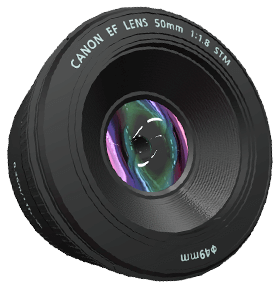 |
Canon EF 50mm f/1.8 STM Lens
OUR CHOICE |
Check PRICE → | |
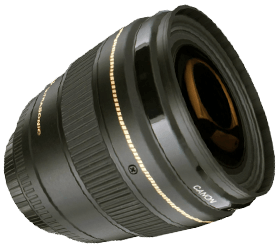 |
Canon EF 85mm f/1.8 USM Lens
FOR PORTRAITS |
Check PRICE → | |
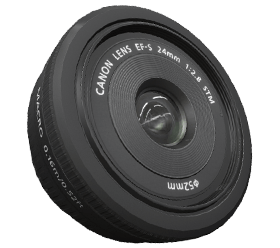 |
Canon EF-S 24mm f/2.8 STM Lens
MANUAL FOCUS |
Check PRICE → | |
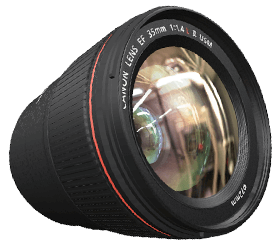 |
Canon EF 35mm f/1.4 II USM Lens
WIDE ANGLE |
Check PRICE → | |
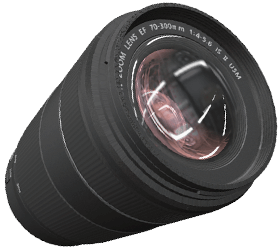 |
Canon EF 70-300mm f/4-5.6 IS II USM
HIGH QUALITY |
Check PRICE → |
How to Choose the Best Canon Lens?
Several characteristics set apart the best Canon lenses from other average models.
Aperture and Image Stabilization
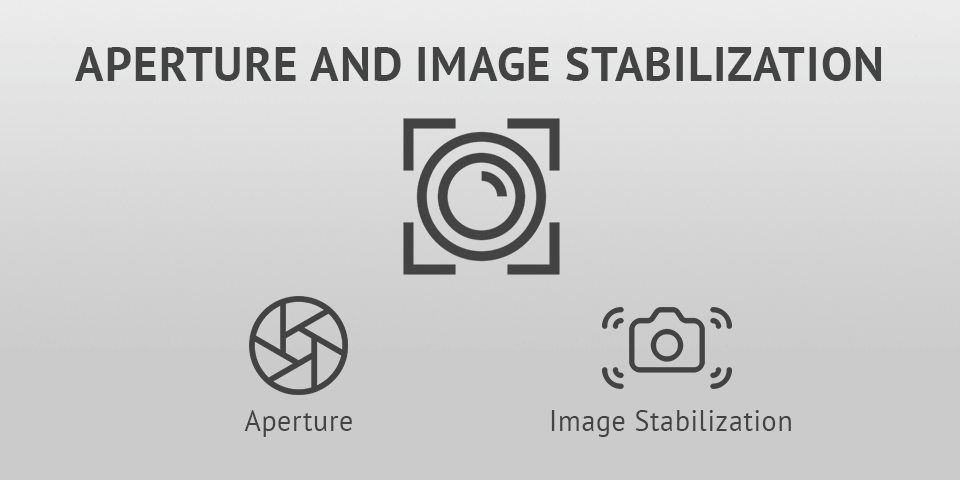
The largest possible aperture is always marked on all lenses. It corresponds to the maximum amount of light the lens can pass to the camera’s sensor. A larger amount of light improves the quality of photos taken in darker lighting conditions. This characteristic is reflected by the aperture value (like f/2.8 or 1:2.8). The lower the value, the more light the camera will receive.
While the number of DSLR cameras that come with built-in optical image stabilization is increasing by the year, many manufacturers still rely on the lens to provide the IS. Stabilization is implemented by making some lens parts movable, thus minimizing camera shake. Since brands like Olympus, Pentax, and Sony all include IS in their camera bodies, you don’t need to look for lenses with stabilization for their products.
Focal Length
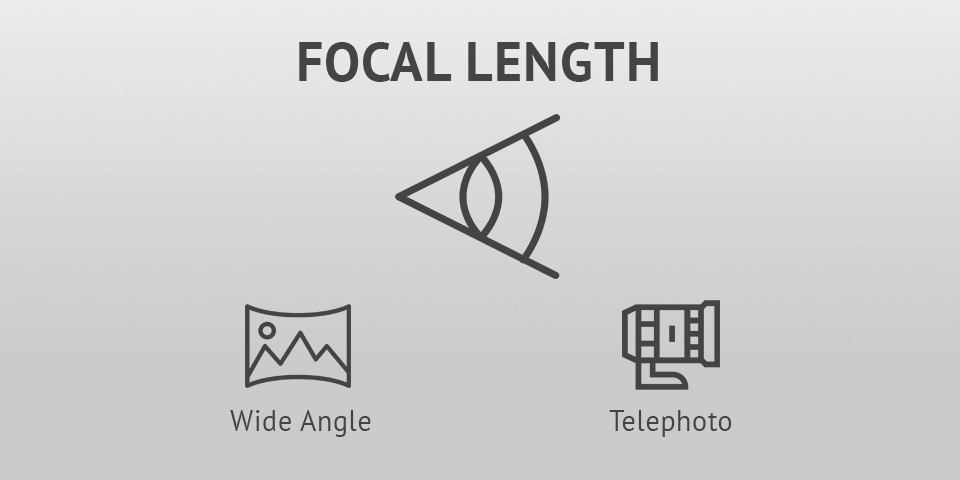
Focal length. Its value is given in millimeters and it helps determine if the lens is wide-angle or telephoto. Wide-angle lenses are the ones that have a smaller focal length than the length of the camera’s sensor. Usually, the wide-angle value lies right below 35mm.
Telephoto lenses are also better for blurring the background since they have a smaller depth of field than wide-angle models. They produce lower brightness and are susceptible to blur if the camera is unstable. Lastly, telephoto units are typically bigger and heavier compared to wide-angle ones.
- Discover how to select a camera lens.
Fixed or Zoom
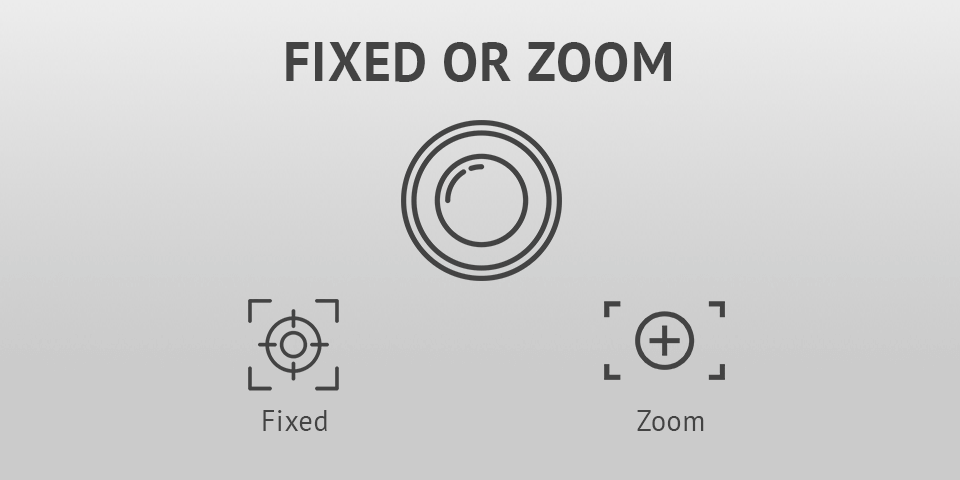
For the majority of photographers, a zoom lens is the way to go. You can choose between multiple focal lengths and therefore can save both money and space in your bag on extra lenses.
Zoom models always mention 2 focal lengths in the description (like 18-55mm), which indicate the range of a lens. Speaking in terms of compact camera, you need to divide the larger value by the lower, which would equal 3x for the lens mentioned above. The choice between fixed and zoom lenses depends on your shooting preferences and intended use. If you value image quality, low-light performance, and the creative possibilities of a specific focal length, a prime lens may be the ideal choice.
Conversely, if versatility, convenience, and the ability to quickly adapt to different situations are more important, a zoom lens will better suit your needs.
Full-Frame vs Crop
Canon Cameras come in two main sensor sizes: full-frame and crop sensors. Full-frame sensors offer larger dimensions, resulting in superior image quality, improved low-light performance, and a shallower depth of field. They're favored by professionals for their superior capabilities, especially in challenging lighting conditions. However, full-frame cameras and lenses tend to be pricier and bulkier.
On the other hand, crop sensors are smaller and more affordable, making them suitable for hobbyists and budget-conscious photographers. They offer a "reach" advantage, effectively increasing the focal length of lenses for wildlife and sports photography. Crop sensor cameras are also more compact and lighter, making them great for travel. While they might not match the image quality of full-frame sensors, they provide excellent performance for various photography styles. Choosing between full-frame and crop sensors depends on your budget, preferences, and intended use, with both offering a range of Canon cameras to suit different needs.






















